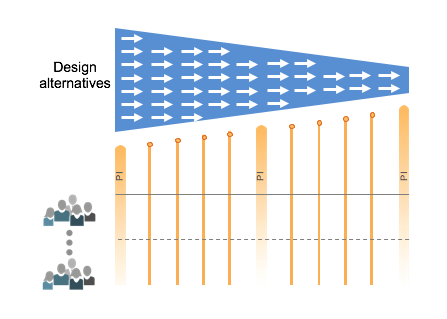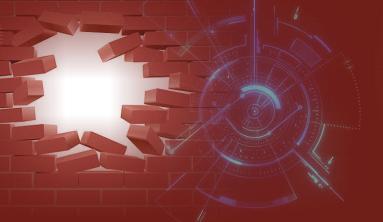1. Point-based Design

A point-based design approach commits to a set of requirements and a single design strategy too early in the ‘cone of uncertainty’. It often leads to incorrect assumptions and late discoveries that require significant rework. As the facts become known and the deadline approaches, teams must often rush to solve problems. This emergency work can result in shortcuts, stress, quality compromises, and missed commitments and deadlines.

Figure 1: Unstable time frame for point-based design
2. Set-based development
Set-based design, often written as simply SBD, is the practice of keeping design options flexible for as long as possible during the development process.
Set-based design is a design, analysis, and decision-making practice characterized by:
-
Not selecting a particular values for design decisions but rather analyzing the full set of possibilities, not as a finite collection of a few points, but as an infinite set of points.
-
Rather than trying to “pick the best”, instead trying to “eliminate the weak”.
-
Not selecting a particular design and then analyzing its performance, but rather analyzing the drivers of performance and limits on feasibility and using that knowledge to identify more desirable parts of the design space (of the full set of possibilities).
Set-based design allows teams to maximize flexibility, cost, and speed: Designs stay flexible throughout the development process. The team can adjust to new information as needed. Costs stay low because teams work to test assumptions before investing in technical solutions.
3. Set-based vs. Point-based development
Set-based design is different than a traditional point-based approach. A point-based design approach commits to a set of requirements and a single design strategy too early in the 'cone of uncertainty'.




Images contrasting "Point-Based" vs. "Set-Based" practices (from last reference below):


Images contrasting too few points to have set-based knowledge vs. having enough points to gain set-based knowledge (from last reference below):






